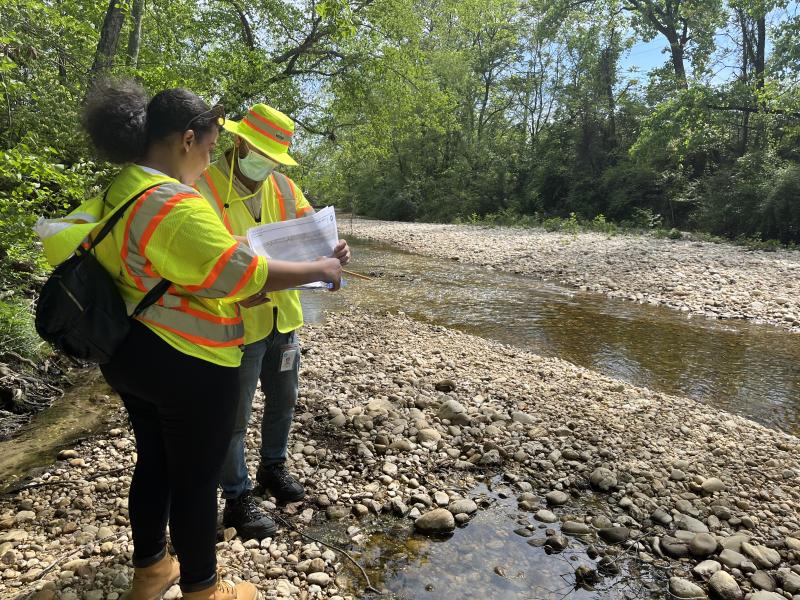Flooding Preparedness Information
Flooding in Alexandria
Nearly every year, and sometimes several times throughout the year, during periods of heavy rain, strong winds, or quick snow melts, residential and commercial properties are threatened with the potential of tidal, wind-driven, and storm surge flooding from the Potomac River and/or flash flooding from its tributaries. Additional information about flooding in Alexandria, including Flood Insurance Rate Maps (FIRMs) is available at alexandriava.gov/FloodMap.
We encourage residents and business owners to plan for flooding as part of their emergency preparedness.
View more information about what the City is doing to help improve flooding and drainage issues.
Protect Your Home from Sewer Backups
Heavy rains, which typically occur during hurricane season, sometimes cause sewer backups in some parts of Alexandria. The City urges residents to take necessary precautions. With many hours of heavy rain, sewer line may fill up with water and some sewage. Because of this, the sewer system may approach its carrying capacity and may overflow in some areas. It may also back up into homes through floor or plumbing drains.
There are several steps you can take to help prevent sewage backup into your home.
-
Ensure that your back flow preventer, if you have one, is in working order and closed as necessary.
-
Stuff a rag, softball or other material into floor drains to stop the flow into your basement.
-
Cover the drain with a floor mat and weigh it down.
-
Place a heavy object on the closed cover of basement toilets to prevent sewage from backing up.
-
Restrict the use of plumbing as much as possible until rains subside. This includes dish and clothes washers, showers and toilets.
-
Use reasonable precautions to protect yourself from exposure to what may be contaminated water by wearing waterproof boots and gloves.
After the rain stops, if sewage has come through a floor or plumbing drain, open the drain to allow as much water to drain out as possible; use buckets, sump pump or other means to remove as much of the contaminated water as possible.
For more information, call 703.746.4800.
Protect Your Home or Business with Sandbags
When there is a high risk of Coastal flooding, the City will often make sandbags available to residents and businesses. For several years, the City of Alexandria’s Department of Transportation and Environmental Services (T&ES) has operated a flooding prevention program that included the limited provision of sandbags to affected business and residential areas.
PROPER USE OF SANDBAGS
The use of sandbags is a simple, but effective way to prevent or reduce floodwater damage. Sandbags can act as a barrier to divert moving water around instead of through buildings. Sandbag construction does not, however, guarantee a watertight seal.
- Remove any debris from the area where bags are to be placed.
- If tied bags are used, flatten them and flare the tied end. If untied bags are used, fold the open end to form a triangle.
- To form a sandbag wall, place bags tightly against one another to form the first layer of defense.
- Place succeeding bags on the folded or flared portion of the previous bag and stamp into place to eliminate gaps and to form a tight seal.
- Stagger the second and subsequent layers of bags, similar to the pattern of bricks on a wall.
- Never use bags to build a fortress around your property because this approach can trap water between sandbag walls and structures, causing further damage.
Do not rely on sandbags alone to protect your property. Use baffle boards (plywood sheeting) or sheets of plastic tarp with sandbags.
WHAT DO I DO WITH SANDBAGS AFTER A FLOOD?
When the threat of flooding is over, sandbags distributed by the City of Alexandria can be saved for future use or returned to the point of pickup. You can also cut the bags open and use the sand in garden or landscaping projects, as you would mulch. Please do not dispose of sandbags in normal trash or recycling; because they are so heavy, they could potentially injure the trash and recycling crew members who empty your cans.
Maintain Your Property to Minimize Risk
- Water can leak into crawl spaces and/or basements through foundation cracks, pipe holes, vents, doors or windows. Also, it can seep between the house siding and foundation sills. Use cement to fill cracks in the foundation, seal openings around pipes with cement or caulk; and seal the joint between siding and foundation with caulk.
- Make sure your gutters and downspouts are clean and in working order. Ensure that gutters and downspouts discharge properly into the storm sewer or some distance away from your property.
- Maintain the grade around your house so that rainwater drains away from the foundation.
- Consider installing a backup, battery-powered or water-powered sump pump if you rely on a sump pump to keep your house dry, and be sure you understand the limits of the backup pump.
- Consider investing in a generator or heavy-duty power inverter to cope with extended power outages.
Current Conditions
Water data from the U.S. Geological Survey (USGS) National Water Information System.
